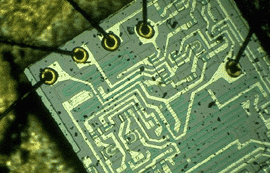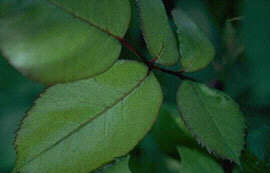 INDUSTRY INDUSTRY |
Industrial zones have been recently defined and are in the process of being tested in order to facilitate the establishment of new units on the six Madagascar's provinces. According to Mamy Ratovomalala, Minister of Industrialization and Handicrafts, "the dialogue between the private sector and the State has allowed to improve the industrial environment in Madagascar and it has reassured investors". The objective is to give a new impulse to the industrial sector that hardly represents 12% of GDP, 75% of which are textile and food industries.

With an average growth of 4.8% registered in the past few years, Madagascar still remains an under-industrialized country. Ma inly based on a draft economy, the Big Island waited a long time before moving into a real industrialization program. Early 1970's, the State decided to take care of the industrial development and started a policy of investment at any cost. Large public industrial entities emerged throughout the island.
Even if some of them never became operational, such as Zeren, a chemical fertilizers factory set up in the province of Toamasina, others like Kobama, a flourmill in the region of Vakinankaratra, survived. They were faced with supply issues as far as their raw materials were concerned, difficulties to place their production and bad management. In the past they had the tendency to place the cart before the horse. Because it couldn't rely on local raw materials, Kobama was forced to import young wheat for its mill in order to obtain a capacity of 50,000 tons. The wheat operation initiated with farmers from Vakinankaratra ended up in a disaster. The 1,300 Has. planted -when what was actually requested was a wheat area of 20,000-50,000 Has. - did not produce but 5,000 Tons, i.e., barely a tenth of its needs. The world crises also hit these enterprises hard, particularly the oil conflict at the end of the 1970's and beginning of the 1980's.

Consequently, authorities decided at that time to open up the capital of these public enterprises to private investors. Then, under donors' pressures, the State agreed to disengage from production activities. To boost the industrial network, the creation of small and medium scale enterprises was highly recommended and supported through loans in particular granted by the international organizations. The political problems linked to the 1991events hindered the implementation of the measures as defined in the structural adjustment program. Today, the industry seems to be reviving thanks to a secured investment framework. | Madagascar has started to attract foreign capital. From 1996 till 1999 the volume of foreign direct investments has increased from USD 7 million to USD 37 million.
The latest survey on Madagascar's formal industrial sector carried out by the National Institute of Statistics reveals that Malagasy companies are mainly involved in four areas: textile (20.6%), Construction (16.8%), wood (10.3%) and food (9.9%). If we include agro-industry, beverages, tobacco and fats, these branches represent two thirds of the formal industrial companies. 56% of them produce consumer goods almost entirely sold to the local market. 4.5% are more than 25 years old, 9.8% more than 15 years old and 79% were created after 1990. Large enterprises are more resilient to the uncertainties of the socioeconomic situation than smaller units. Small and medium sized enterprises represent 36.6% of the total companies and employ 19.7% of the formal industrial sector.
Considering how narrow the Malagasy market is, its industry is forced to turn to export markets. The experience of the past few years, especially considering the dynamism of the textile and shrimp industry, created some expectations. However, constrains are still too many as states this operator: "two years ago, we invited investors, but then VAT rose to 20%. It is necessary to have a long-term frame guaranteed by the Administration".
Cotona, created in 1951 and then absorbed by the Ismaïl family - a French family with Indian origins established in Madagascar three generations ago - is today the most important textile industry in Madagascar. If between 1980-1985 they managed to dispatch 40 million meters of fabrics on the local market, in 1996 sales had collapsed to 16 million meters. Through vertical and horizontal integration as well as diversification, Cotona is now part of the textile group Socota that exports 75% of its production. "It is necessary to help Malagasy companies to export and to find market niches in order to be more competitive, not only with traditional products" suggests Florette Andrimiarisatrana, President of the think tank on Competitiveness (Comité de Réflexion sur la Compétitivité - CRC).
Two main industrial operators and a few wholesalers dominate the pharmaceutical industry. Competition by imported products forces local operators to double their efforts in order to remain competitive and to retain their market share. Some of them such as FARMAD, have even transferred their production while keeping their know-how, "gray matter" and their fame in situ. Mr Michel Ramanantsoa, Director General of FARMAD, has definitely turned towards Asia; he considers it as a major target for development. "In the near future, Asia will act as a leading economic zone in the world's economy. We need to take advantage of its dynamism while keeping our identity and our local market. We want to increase trade, so the more Asia will grow, the more we will be able to benefit from it".
|

